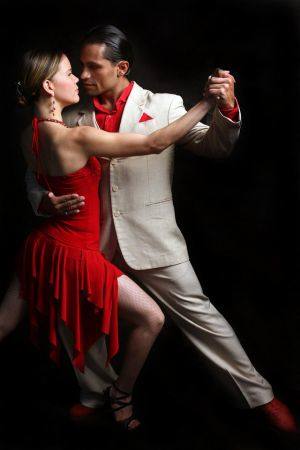- MENU
- HOME
- SEARCH
- WORLD
- MAIN
- AFRICA
- ASIA
- BALKANS
- EUROPE
- LATIN AMERICA
- MIDDLE EAST
- United Kingdom
- United States
- Argentina
- Australia
- Austria
- Benelux
- Brazil
- Canada
- China
- France
- Germany
- Greece
- Hungary
- India
- Indonesia
- Ireland
- Israel
- Italy
- Japan
- Korea
- Mexico
- New Zealand
- Pakistan
- Philippines
- Poland
- Russia
- South Africa
- Spain
- Taiwan
- Turkey
- USA
- BUSINESS
- WEALTH
- STOCKS
- TECH
- HEALTH
- LIFESTYLE
- ENTERTAINMENT
- SPORTS
- RSS
- iHaveNet.com: Travel
By Diana Korte

Tango Buenos Aires
Tourism is up in Buenos Aires. And why not? It's more affordable than most exotic destinations, it's big city fun, and it's home to the tango and all that this dance brings to visitors who come to this city known as the Paris of the South.
When the snow is flying in New York City, it's springtime in Buenos Aires, a port city on Argentina's long Atlantic coast. And the time zone for both cities is the same. The temperature is mild year-round, and in the winter it's sunny and in the 80s.
The jacaranda trees will be in their spring finery of purple blossoms. And the fast-moving dog walkers and their charges -- sometimes 20 or more leashed dogs spread out like moving petals on a flower -- will take people-watching to a whole new level.
Spanish-speaking Buenos Aires, the most European of cities in South America, is a sprawling metropolis of parks, cafes, museums and some 2,000 monuments.
Here's information about people and places, and of course the dance, that only be found in this famous city.
THE TANGO
The tango was born here. It appeared in the 1880s with the music and the dance, it's believed, coming from some combination of Italian immigrants, African slaves and brothels. Tango is taught around the world now, but Buenos Aires is its birthplace.
Visitors can take tango lessons all day in Buenos Aires, or dance in the streets in the colorful La Boca section of town where the Italian dockworkers first settled. At night there are more than 30 tango dinner theaters to choose from or you can skip dinner, find a tango bar and just watch (www.turismo.gov.ar).
Among the popular tango dinner clubs in Buenos Aires is El Querandi (http://www.querandi.com.ar). The night we were there the men were each given a black fedora, white scarf and suspenders, so that they looked like tango dancers. And the women were each draped with a red boa, a red rose necklace and long black gloves. In this club the tango is danced on a small stage in vignettes that tell a story about the dancers. Two dancers and an accordion player in one scene, two couples by the piano in another, a singer by himself and so on during an enchanting evening.
The Esquina Carlos Gardel Cena & Tango Show (http://www.esquinacarlosgardel.com.ar), named for one of tango's early heroes, is in a bigger theater. The men wore tuxedos. The women wore period clothes from the '20s and '30s with flowing skirts or tight dresses with slits up the thigh. The best-looking man looked like Antonio Banderas. The women, of course, were all stunning. The dancers had different styles -- some were athletic, some more artistic, but all of the dancing was intimate and passionate with intricate steps and dramatic lunges.
EVITA
Recoleta Cemetery (http://www.info-recoleta.com/recoleta_cemetery.htm) is one of those it-could-only-be-in Buenos Aires stops and is home to some of the city's rich and famous seeking a good hereafter, including Eva Duarte Peron, heroine and saint to many in Argentina. Just thinking about her makes me hum the song, "Don't Cry for Me Argentina" from the Andrew Lloyd Webber musical "Evita."
Covering four city blocks, the cemetery houses big and bigger mausoleums, some with glass fronts. When we looked through the glass, we saw coffins on shelves and photos of the deceased arranged on fireplace mantels. Although 90 percent of Argentina is Catholic, you don't have to be Catholic to be buried in Recoleta, only wealthy.
The living also reside in Recoleta. Some 80 cats call the cemetery home and gather twice a day to be fed by local women. A woman buried in Recoleta is thought to be the felines' benefactor. The story goes that she left her fortune to her maid with the stipulation that she feed these cats twice a day and make sure they were healthy. As we were leaving, dozens of cats gathered for that first meal of the day.
THE PALACE
A few blocks from the cemetery is the Alvear Palace Hotel (www.alvearpalace.com), often described as the no. 1 hotel in South America. It was built in 1932 from Parisian blueprints and has since been renovated to its current poshness. The Palace oozes luxury thanks to crystal chandeliers and golden walls that set the tone.
This hotel has all the amenities of luxury hotels plus one. Sure, other grand hotels around the world may have butlers, but they're almost always only for the more expensive rooms or suites. At the Alvear Palace every guest has a butler. Ours was tuxedo-clad, perfectly mannered Cecilia who, upon request, would unpack luggage, arrange complimentary pressing of two clothing items, draw a bath, shine shoes, pick up and deliver laundry and set up a PC and an Internet line. And the list goes on from there. If you always wonder if you left something in the room after you've checked out, at this hotel your butler always checks the room after you've left -- just in case.
Many airlines fly to Buenos Aires from several continents, but
© Diana Korte, Vacation Travel Muse
AUTOS | HOBBIES | EDUCATION | FAMILY | FASHION | FOOD & RECIPES | HOME DECOR | RELATIONSHIPS | PARENTING | PETS | TRAVEL | WOMEN
Bound For Buenos Aires Argentina